
Cambodia chefs go in search of forgotten flavours as renaissance in Khmer cuisine gathers pace
- Chefs revitalising the country’s food industry cook using traditional local produce and techniques while incorporating global influences
- Cambodia boasted some of the finest restaurants in Southeast Asia before the brutal Khmer Rouge regime seized power in 1975
Mudfish, sardines or anchovies are first cleaned and descaled before being placed in a basket and then crushed underfoot. What remains is left out in the sun to dry for 24 hours, salted and stored in jars to ferment for weeks or even months on end.
This is prahok, and it’s no surprise that the beloved staple condiment of Cambodian cuisine can be hard for visitors to stomach, with its huge and unsubtle whack of funk and flavour, not to mention a distinct and unforgettable aroma.
In Cambodia, tarantulas may not be on the menu for much longer
There is, however, a lot more to Cambodia’s food, and a wave of restaurants are taking Khmer cuisine in new and exciting directions that show diversity in produce and technique while staying true to their earthy roots.
Those roots are tangled. In the 1960s and early 1970s, Cambodia was a highly fashionable destination whose cuisine looked outwards; chefs blended local produce and techniques with colonial French and global influences. It also boasted some of the finest restaurants in Southeast Asia.

Then, however, came the unspeakable tragedy of the brutal Khmer Rouge regime: 1.7 million people were executed or died from disease and starvation. To eat anything more than the most basic food was seen as bourgeois and risked the diner being reported to the country’s new rulers.
The notion of national cuisine or dishes all but disappeared, which helps explain why there are so few Cambodian restaurants around the world – and none in Hong Kong.
Today, however, a Cambodian food renaissance is under way. Shinta Mani means “good heart” in Sanskrit and was launched as a social enterprise before growing into a hospitality business. Today it offers guests a choice of four beautiful luxury properties, three of them on the same site in the heart of Siem Reap, the city nearest the extraordinary Angkor temples complex.
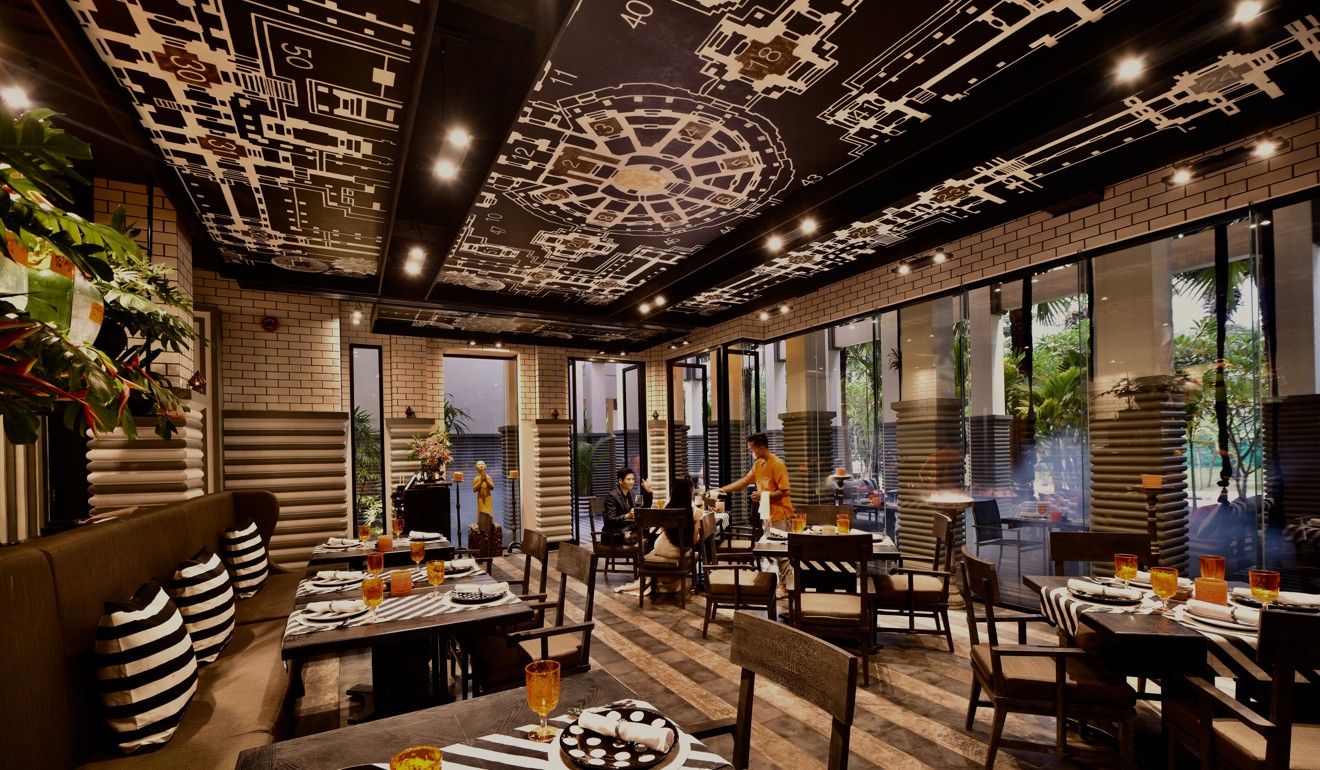
Their culinary programme is run by British-Malaysian Patricia Yeo, who studied biochemistry at Princeton before becoming an acclaimed restaurateur and chef, and winning a Michelin star for her restaurant AZ in New York. She explains Shinta Mani’s mission, which goes beyond serving great food.
“I’m no longer just interested in the latest food combination but instead in promoting sustainability and biodiversity in our food chain and culture. With the Shinta Mani Foundation and our farm, we are trying to grow fast-disappearing produce and support local foragers, farmers and fishermen.”
A visit to the farm reveals some of the ingredients and flavours that help define the Khmer palate.
Real Cambodian cuisine is sweet, sour and slightly spicy … our cooking and presentation is modern, but keeps the original Cambodian flavours
There’s lots of lemongrass – which also serves as an organic pesticide – that joins galangal, turmeric and garlic in a paste which forms the base of many national dishes.
Morning glory flowers, bitter melon, long beans and moringa, one of the latest superfoods, are also grown there, along with non-native crops such as Italian basil, which is destined to be used in an upcoming gin bar at Shinta Mani Angkor. The farm deliberately practices this “vegetable diversification” as a way to help inspire farmers to grow plants expressly designed to provide optimum nutrition for a family.
Even the property’s excellent, and newly opened, Steakhouse champions local flavours. The Khmer bavette steak comes with a Kampot pepper sauce, and celebrates the spice’s nuanced flavour. Some attribute the peppercorn’s distinctive notes to quartz in the local soil.
Pol explains: “My mum is the village cook. When there’s a wedding or ceremony, there may be 1,000 people eating. I followed her when I was young and learnt from her. Sok and I worked together in a restaurant and had the idea to open a place to show off Cambodian food from different provinces.”
A hipster’s guide to Phnom Penh’s coolest neighbourhood
They open only for dinner and serve only a gastronomic tasting menu – seven courses for a bargain US$36. “Real Cambodian cuisine is sweet, sour and slightly spicy – but not as much as Thai food! Our cooking and presentation is modern, but keeps the original Cambodian flavours,” says Pol. Stand-outs from an excellent dinner were a sour soup with tamarind, and duck with prahok, that ubiquitous funky fish paste.
Sok explained that every family has their own prahok recipe. “You can keep it for over a year and like a cheese it gets better and better. The soup also has home-made curry paste, aubergine, melon and lotus stems, while we confit the free-range duck from Chreav village for five hours to get more flavour.”
It made for a brilliant bowl – duck soup for the soul, if you will. The “traditional wedding stir-fried chicken” was also stellar, a recipe Pol knew well from her mother. Pol and Sok style it their own way with Kampot pepper, sea salt, sweet chilli – and red ants.
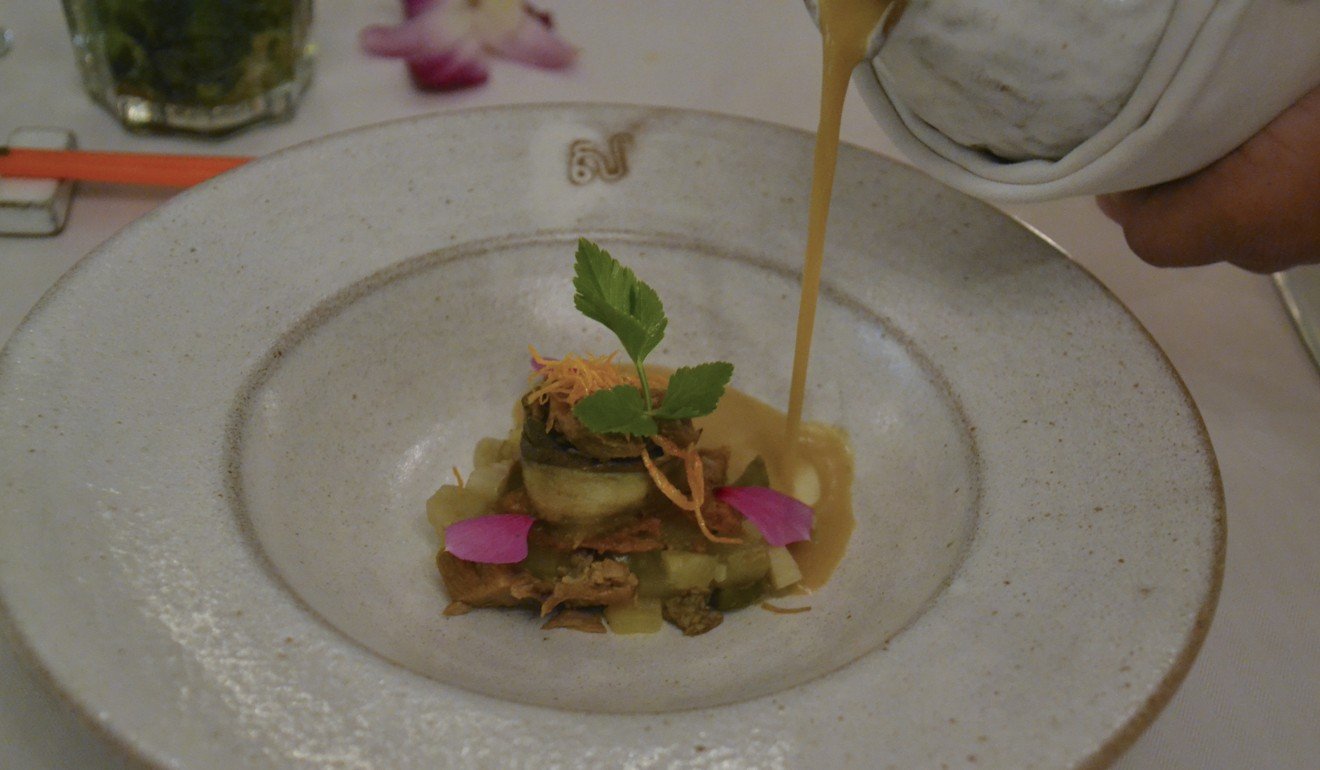
Sok says: “Guests are scared of red ants but want to try them. They come from a mango tree, not from the ground. They’re mixed and blended and, as the ant is very sour, we don’t need to use lemon.”
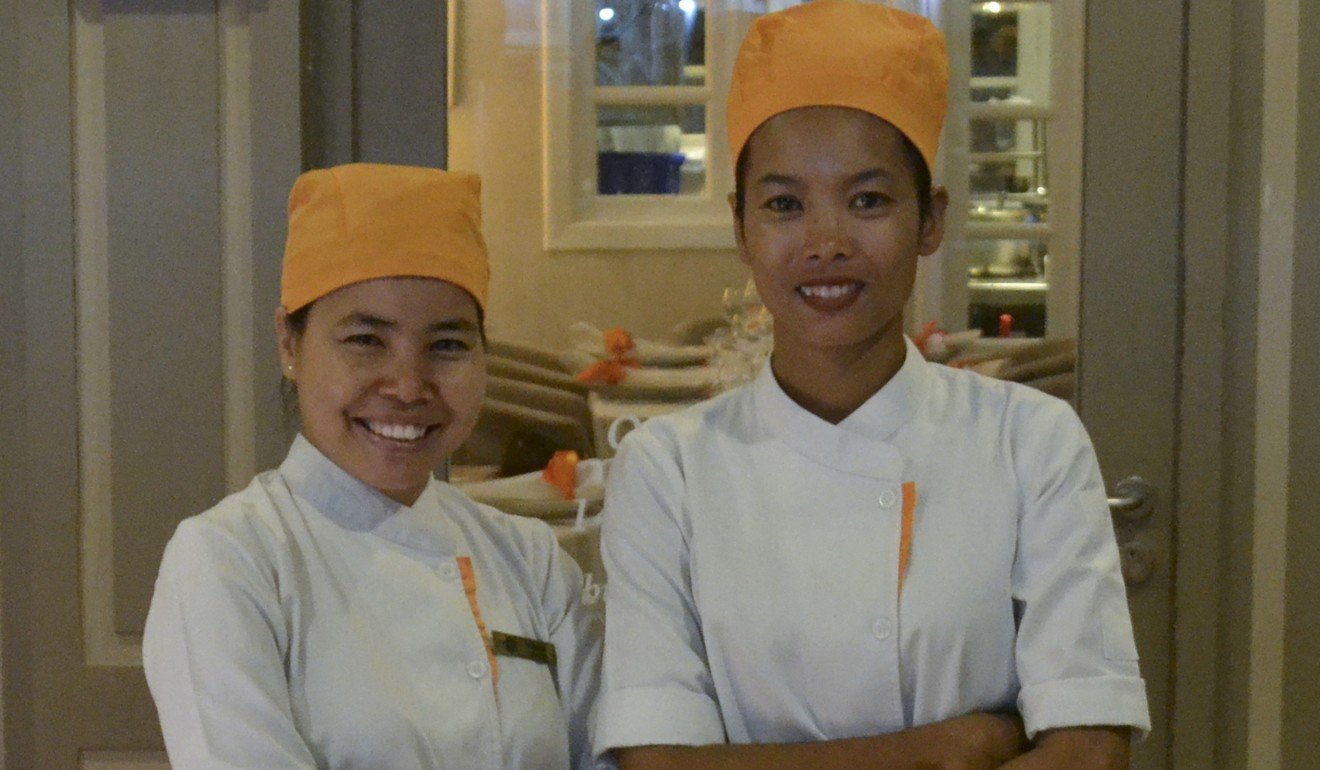
A 20-minute drive brought us to the beautiful riverside property. Nak is a wholly self-taught chef and she explains in impeccable English that her mission goes beyond serving authentic Cambodian food to the handful of guests lucky enough to snag reservations.
She used to work for an NGO called Cambodia Living Arts, and realised that the country’s food was an art form at great risk.
“I felt I had a responsibility in terms of food. In Cambodia, not much was archived or written down, only passed on verbally, so I’ve been archiving a lot of recipes. There’s 250 so far and I’m working on my first cookbook based on home cooking, called Forgotten Flavours,” Nak says.
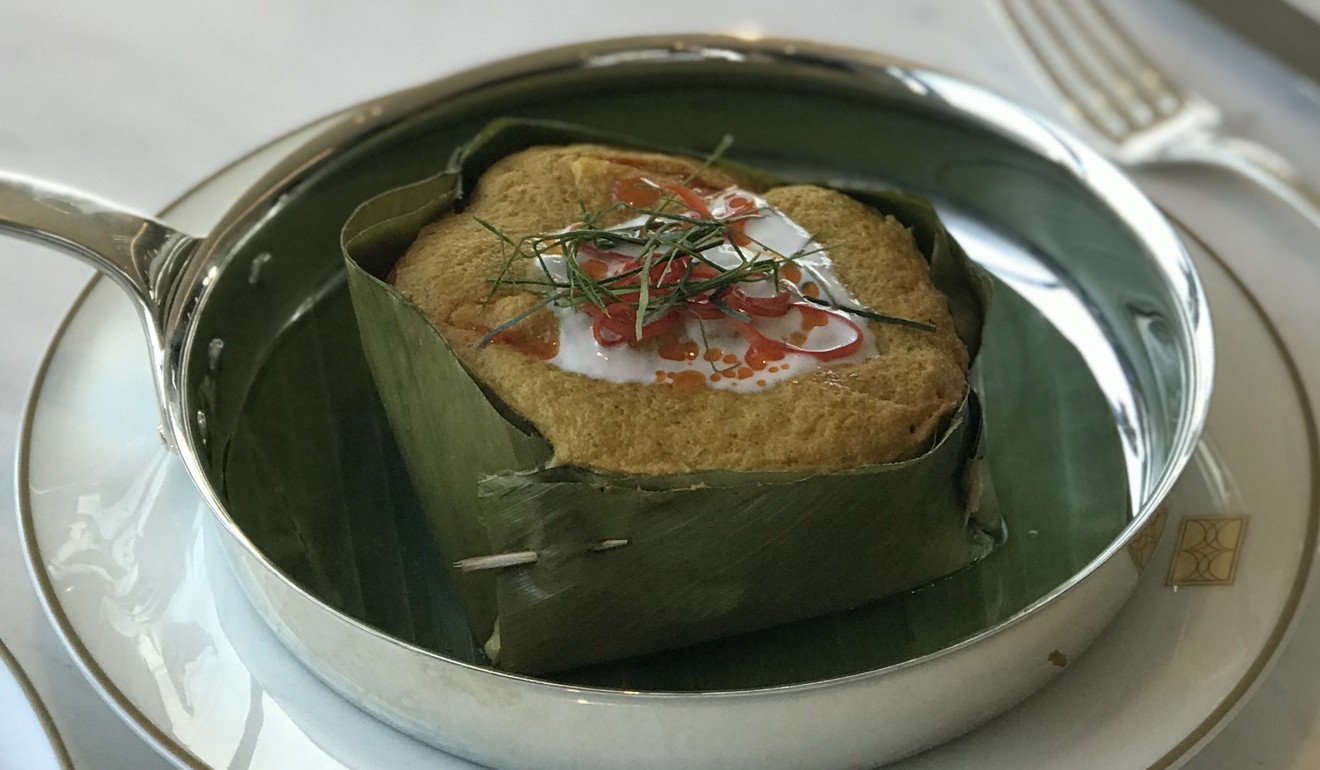
“I go and meet grandparents who survived the Khmer Rouge, asking them what they ate back in the glorious time of Cambodia. I also want to see what they learnt from their grandparents.”
Nak’s menus are drawn up according to what she has found in a visit to the local market that morning, an experience in itself that Rosewood guests can also enjoy, along with a cooking class, for US$90.
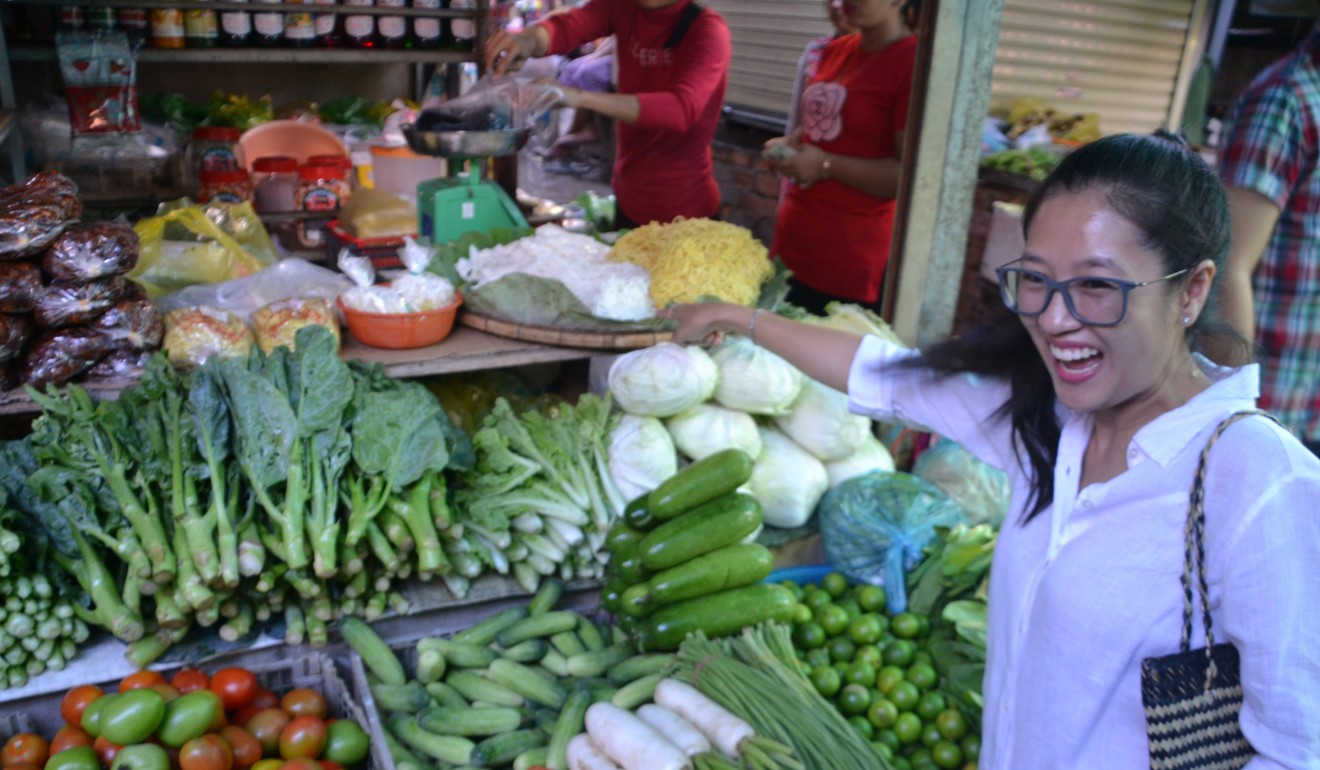
The five-course dinner at her home runs to US$450 including drinks, regardless of whether you’re two people or six. The experience is as much about learning true Cambodian family hospitality as it is tasting her wonderful dishes.
What’s clear is that, with dynamic chefs like Yeo, Pol, Sok and Nak leading the way, the future of Cambodia’s burgeoning cuisine seems in safe hands.
Getting there
Direct flights operate from Hong Kong, Kuala Lumpur and Singapore to both Phnom Penh and Siem Reap. Direct flights from Manila to Siem Reap are available, but flights to Phnom Penh require a change. There are no direct flights between Indonesia and Cambodia.

